-
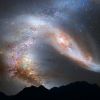 +25 +1
+25 +1First evidence discovered of a gigantic remnant around an exploding star
A San Diego State University astrophysicist has helped discover evidence of a gigantic remnant surrounding an exploding star—a shell of material so huge, it must have been erupting on a regular basis for millions of years. When a white dwarf, the core of a dead star, is in a close orbit with another star, it pulls gas from the other star. The gas becomes heated and compressed, eventually exploding to create a nova. This explosion causes the star to brighten by a millionfold and eject material at thousands of miles per second.
-
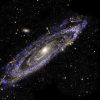 +20 +1
+20 +1We finally know when Milky Way will crash into Andromeda Galaxy
Our Milky Way galaxy will survive in its current form a bit longer than some astronomers had thought, a new study suggests. The monster collision between our Milky Way and fellow spiral galaxy Andromeda will occur about 4.5 billion years from now, according to the new research, which is based on observations made by Europe’s Gaia spacecraft. Some prominent previous estimates had predicted the crash would happen significantly sooner, in about 3.9 billion years.
-
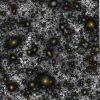 +21 +1
+21 +1The Hubble Telescope's Deep View of the Universe Is Now Even More Astounding!
One of the Hubble Space Telescope's most famous images peered even deeper into the cosmos than scientists had thought. That photo is the Hubble Ultra-Deep Field (HUDF), which combines hundreds of images taken by the space telescope over multiple years into the deepest view of the universe ever created. The composite pic of a small patch of sky contains a whopping 10,000 galaxies, astronomers have estimated. (The HUDF also refers to that patch of sky, not just imagery of it.)
-
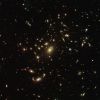 +24 +1
+24 +1A Third of All Galaxy Clusters Have Gone Unnoticed Until Now
The universe is far from homogenous. Rather, stars, and the galaxies that contain them, clump together in some places, brought together by their shared gravitational attraction. Astronomers have historically found clusters of galaxies in the sky to be relatively easy to spot, as they’re extremely large and bright. But one new study suggests that a third of all galaxy clusters have been hiding undiscovered out in the cosmos.
-
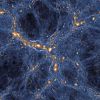 +2 +1
+2 +1Astronomers find a ‘fossil cloud’ uncontaminated since the Big Bang
This ancient remnant of the Big Bang could help researchers better understand how and why different types of stars and galaxies formed in the early universe.
-
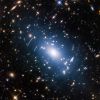 +2 +1
+2 +1Faint starlight in Hubble images reveals distribution of dark matter
Astronomers using data from the NASA/ESA Hubble Space Telescope have employed a revolutionary method to detect dark matter in galaxy clusters. The method allows astronomers to “see” the distribution of dark matter more accurately than any other method used to date and it could possibly be used to explore the ultimate nature of dark matter. The results were published in the journal Monthly Notices of the Royal Astronomical Society.
-
 +8 +1
+8 +1Bizarre 'Dark Fluid' with Negative Mass Could Dominate the Universe
It's embarrassing, but astrophysicists are the first to admit it. Our best theoretical model can only explain 5 percent of the universe. The remaining 95 percent is famously made up almost entirely of invisible, unknown material dubbed dark energy and dark matter. So even though there are a billion trillion stars in the observable universe, they are actually extremely rare.
-
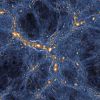 +4 +1
+4 +1Rare relic is one of only three fossil clouds known in the universe
A relic cloud of gas, orphaned after the Big Bang, has been discovered in the distant universe by astronomers using the world's most powerful optical telescope, the W. M. Keck Observatory on Maunakea, Hawaii. The discovery of such a rare fossil, led by PhD student Fred Robert and Professor Michael Murphy at Swinburne University of Technology, offers new information about how the first galaxies in the universe formed.
-
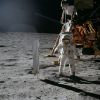 +3 +1
+3 +1NASA Scientist Thinks Aliens May Not Be Carbon-Based And May Have Already Visited Our Planet
A document recently released by a scientist from NASA suggests that Earth might have already had the first contact with aliens, but with carbon-based extraterrestrial organisms. On Monday, Dec. 3, Silvano Colombano, a researcher at Ames Research Center in California, in a two-page paper, argued that the scientific community should broaden its approach in finding life outside of Earth. He further recommended that the community reconsiders the assumption that the planet has never had extraterrestrial visitors.
-
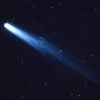 +17 +1
+17 +1The 40-Year Old Mystery of the “Wow!” Signal Was Just Solved
In 1977, the sound of extraterrestrials was heard by human ears for the first time — or so people at the time thought. The Wow! Signal was detected by astronomer Jerry Ehman using Ohio State University’s Big Ear radio telescope. It is a radio signal detector that, at the time, was pointed at a group of stars called Chi Sagittarii in the constellation Sagittarius.
-
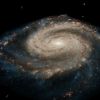 +12 +1
+12 +1How to Measure All the Starlight in the Universe
Astrophysicists have devised a clever way to count up the photons in space, stretching back to the cosmos’ adolescence. Until the 20th century, astronomers were stuck on a question that seems as if it should have an easy answer: Why is the night sky dark? If the infinite universe has an infinite numbers of stars, as they assumed, our evening view should be awash in their glow.
-
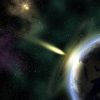 +17 +1
+17 +1Cosmic Airburst May Have Wiped Out Part of the Middle East 3,700 Years Ago
Some 3,700 years ago, a meteor or comet exploded over the Middle East, wiping out human life across a swath of land called Middle Ghor, north of the Dead Sea, say archaeologists who have found evidence of the cosmic airburst. The airburst "in an instant, devastated approximately 500 km2 [about 200 square miles] immediately north of the Dead Sea, not only wiping out 100 percent of the [cities] and towns, but also stripping agricultural soils from once-fertile fields and covering the eastern Middle Ghor with a super-heated brine of Dead Sea anhydride salts...
-
 +18 +1
+18 +1Meet the woman who discovered a whole new type of galaxy
As a child growing up in Turkey, astrophysicist Burçin Mutlu-Pakdil used to enjoy looking up at the stars in the night sky. Little did she know that thanks to her scientific skills, a galaxy sitting 359 million light-years from Earth would one day bear her name. Mutlu-Pakdil’s lifelong passion for astrophysics was born when she had to prepare an assignment in middle school on an interesting person. “I asked my sister for suggestions on who I should choose for my assignment, and she suggested Einstein, because he’s the cleverest man in the world,” Mutlu-Pakdil says.
-
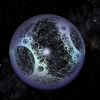 +19 +1
+19 +1Have Astronomers Found Another "Alien Megastructure" Star?
A faraway star in the southern sky is flickering in an odd manner that suggests a bizarre cloud of material—or something even stranger—is in orbit around it. Discovered by astronomers using a telescope in Chile, the star is reminiscent of two other enigmatic astrophysical objects, one thought to harbor a planet with rings 200 times larger than those of Saturn, the other most famous for the remote possibility it is encircled by “alien megastructures.” The newfound star may help shed some light on one or both of these puzzling objects.
-
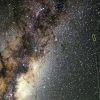 +2 +1
+2 +1Ancient Star Found that's Only Slightly Younger than the Universe Itself
According to the most widely-accepted cosmological theory, the first stars in our Universe formed roughly 150 to 1 billion years after the Big Bang. Over time, these stars began to come together to form globular clusters, which slowly coalesced to form the first galaxies – including our very own Milky Way. For some time, astronomers have held that this process began for our galaxy some 13.51 billion years ago.
-
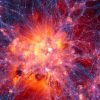 +14 +1
+14 +1Scientists Pinpoint Where Dark Matter Is Hiding in the Universe
There's a huge amount of matter in the universe that we can't directly see. But scientists can tell it's there. They call it dark matter. They know it's there because its gravity tugs on the stars and galaxies around it, altering their movement. Dark matter also tugs on light as it passes, bending its path, a phenomenon called gravitational lensing. And now, by studying where that lensing appears in the sky, an international team of scientists have released a detailed, 3D map[BI1] of dark matter.
-
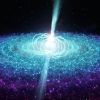 +15 +1
+15 +1Powerful jets found shooting from neutron star with incredible magnet
For the first time, astronomers have witnessed a fast-moving jet of material shooting outward from a neutron star with an extremely powerful magnetic field — one that is some 10 trillion times stronger than the Sun's. The surprising discovery not only caught researchers off guard, but is also forcing them to fundamentally rethink their current theories regarding how jets form throughout the cosmos.
-
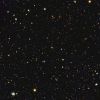 +15 +1
+15 +1Hubble just took a brand new photo that will make you feel completely insignificant
We all might be anxiously awaiting the eventual launch of NASA’s James Webb Space Telescope — which has been stuck in an endless series of delays thanks to the idiots at Northrop Grumman — but the trusty Hubble is still delivering some pretty fantastic views of the heavens. The telescope’s latest snapshot is a real doozy, and it’s going to make you feel like you barely even exist.
-
 +14 +1
+14 +1A $1 billion telescope that will take pictures 10 times sharper than Hubble's is now officially under construction
In astronomy, cutting-edge technology often begins with a bunch of bulldozers, busted rocks, and dump trucks. So it goes with the Giant Magellan Telescope (GMT), which will the world's largest and most powerful when it sees "first light" in 2024. Astronomers hope to use the huge observatory to study the ancient universe and look for signs of alien life. Construction crews atop a Chilean mountain range broke ground for the $1 billion project on Tuesday.
-
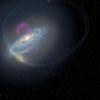 +2 +1
+2 +1Oldest galaxies in the universe discovered right on our doorstep
Meet the Milky Way’s elderly neighbours. It turns out that the faint galaxies orbiting our own are among the oldest in our universe – a discovery hailed as the equivalent to finding the remains of the first humans that inhabited Earth. These satellite galaxies, including Ursa Major and Bootes I, are thought to be more than 13 billion years old. The closest is probably Segue-1, some 75,000 light-years away, says Sownak Bose of the Harvard-Smithsonian Centre for Astrophysics.
Submit a link
Start a discussion




















